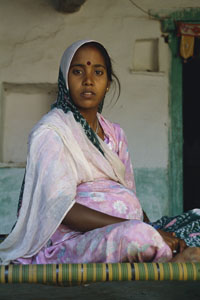
© Viviane Moos/Corbis
A novel program in India that pays impoverished women to give birth in medical institutions may be reducing infant mortality and the risk of stillbirth, according to new research published last week in the British medical journal The Lancet.
In this latest study, which was sponsored by the Bill & Melinda Gates Foundation, researchers at the University of Washington’s Institute for Health Metrics and Evaluation examined the impact of the Janani Suraksha Yojana program. The program, which was launched in 2005 and whose name translates to “Safe Motherhood Scheme,” targets pregnant women ages 19 and older who are living below the poverty line, and offers cash in exchange for giving birth in a medical setting. According to the analysis, compared with births among women who did not participate in the JSY program, those who did faced nearly 4 fewer cases of stillbirth or infant death within the first week after birth per 1,000 pregnancies.
The cash incentive for giving birth in a medical institution varies by state, but women who participate in the program generally receive between 600 to 1,400 rupees ($13 to $31). Researchers also found that participation in the program varied significantly by state — in some states nearly half of all pregnant women (44%) gave birth in a medical setting in exchange for payment, while others states saw fewer than 4% of pregnant women utilizing the program.
Yet while the progress against stillbirth and early infant death is to be lauded, the study authors say that inconsistent awareness of the program may be limiting its impact on the women in greatest need. As they write:
“The finding that the poorest and the least educated women do not consistently have the highest odds of being JSY recipients indicates that an improvement of targeting of this program is required.”
The introduction of the JSY program has increased the proportion of women choosing to give birth in medical settings, the authors conclude, and appears to have reduced the incidence of both stillbirth and neonatal death. A next step in the research is to determine whether this initiative has affected maternal mortality rates, as well as if the program can be incorporated into broader initiatives to promote and improve infant health and obstetric care for women throughout India. As Stephen Lim, lead author of the study, commented via email:
“It’s such an important program given the importance of India in terms of the global numbers of births. If you make a difference in India, you definitely make a difference in the world in saving more children’s lives, and, possibly more women’s lives — although that remains the big unknown. We’ll need more data and more time to evaluate the effect on maternal mortality.”

